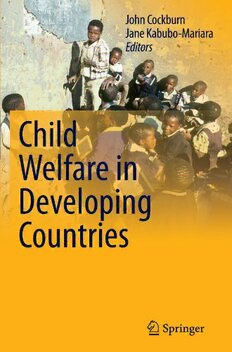
Child Welfare in Developing Countries PDF
309 Pages·2010·1.635 MB·English
Most books are stored in the elastic cloud where traffic is expensive. For this reason, we have a limit on daily download.
Preview Child Welfare in Developing Countries
Description:
What factors affect child welfare? How can policy improve child welfare? In developing countries, there has been relatively little empirical work on the analysis and measurement of child poverty. Further, poverty has many dimensions, including mortality, morbidity, hunger, illiteracy, lack of fixed housing and lack of resources, and cannot be assessed with a single measurement method. Based on original research in Africa and South America, and using a multidimensional poverty indicator approach, this book identifies the existence of inequalities in child welfare, analyzes their sources, and evaluates the impacts of policy responses to those inequalities. Topics considered include monetary poverty, asset poverty, nutrition, mortality, access to education and school attendance, child labor and access to health services. The book’s findings demonstrate that while current government programs offering financial assistance, supplementary food, and free or subsidized education and health care have a positive impact on child welfare, these outcomes can still improve, and proposes policy prescriptions towards this end. The book will be of use to poverty and policy researchers, professionals in international development, and graduate students interested in poverty and inequality.
See more
The list of books you might like
Most books are stored in the elastic cloud where traffic is expensive. For this reason, we have a limit on daily download.
